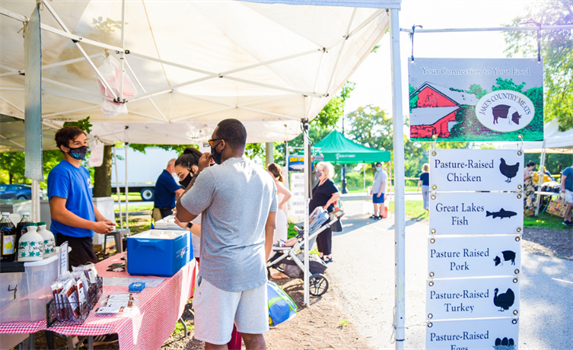Posted Feb 14, 2022

Over 85 percent of all seafood consumed in the US is imported, so it really shouldn't be all that shocking that most "fresh" fish you see has actually been flash-frozen and then thawed for the best flavor, texture, and nutritional value. (It's also the best way to kill parasites and bacteria.)
In the scheme of things, however, the question of "freshness" isn't the most pressing question when it comes to seafood in this day and age.
The UN estimates that over 85 percent of the world's fish populations are fished to the max. A 2006 study in Science predicted that if such unsustainable fishing rates continue, all the world's fisheries will collapse by 2048.
David Chang's Hulu show The Next Thing You Eat takes on this problem by analyzing the history and explosion of sushi in the last twenty years. Sushi expert Masuhiro Yamamoto notes that sushi used to be a preserved food, until it spread to present-day Tokyo where people started to season the fish with salt and vinegar to be able to eat it right away instead of waiting months or years for it to ferment. "That was originally what sushi was about," the show narrates, "a small-time street food using local fish that were in season."
Today in Japan, sushi is considered a luxury or special occasion food, whereas in the US you can find sushi readily in grocery stores, at the airport, and in restaurants in most cities at a relatively affordable price. According to sushi chef Yumi Chiba, fish have different seasons depending on the type of fish. "We enjoy different fish depending on the season. It's the basic rule of Japanese cooking."
In the US, however, sushi isn't exactly what most people think of as a seasonal dish in the same way most people know that the clamshells of strawberries you find in a Chicago grocery store in February aren't seasonal. The same is generally true for fish and seafood more broadly in the US — we take for granted that these products are available year-round, without really reckoning too much with where to buy our seafood, when to buy it, and how frequently we should be eating it.
In the Great Lakes, winter is generally the best time to find Brown Trout, Steelhead, and Walleye. Spring is best for Coho Salmon, summer is best for Yellow Perch, and fall for Lake Trout.
Buying your fish from local vendors is one the best ways to find out what's available and in season near you. It's also a great way to diversify the types of seafood you're eating to avoid contributing to overconsumption of the world's most popular (and most endangered) species like salmon and tuna.
Jake's Country Meats and Finn's Ranch both sell fish at Green City Market, and Finn's currently has Wild Chinook, Walleye, and Trout available for home delivery or curbside pick-up.
So the next time you're eyeing that 10-pack of salmon fillets in the grocery store aisle, consider subbing your weekly salmon dinner ritual for a fish-of-the-month and check out whatever's available seasonally and locally from Green City Market's farmers.